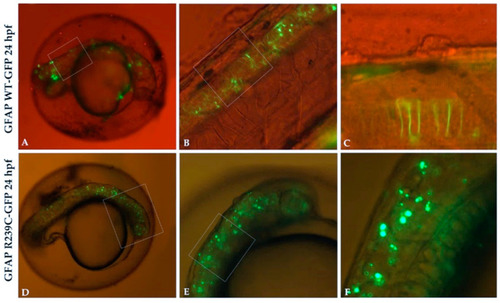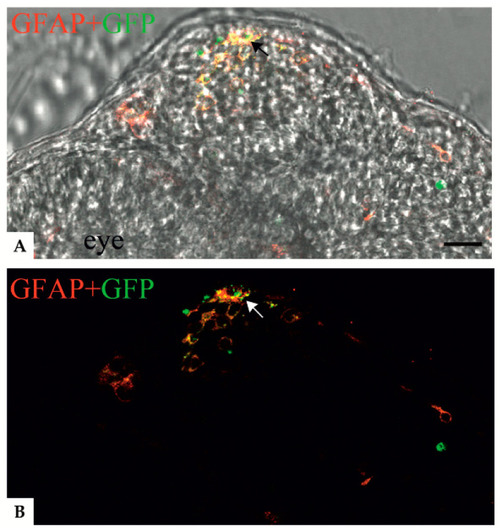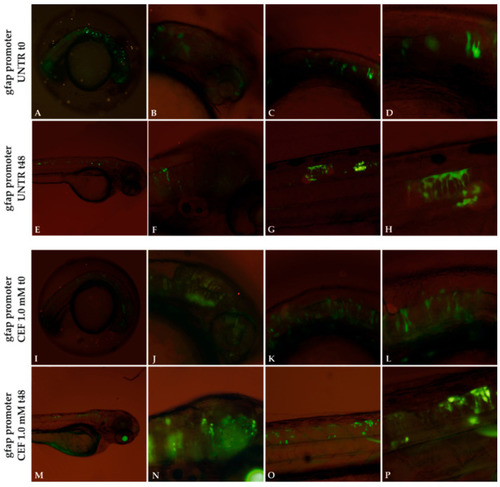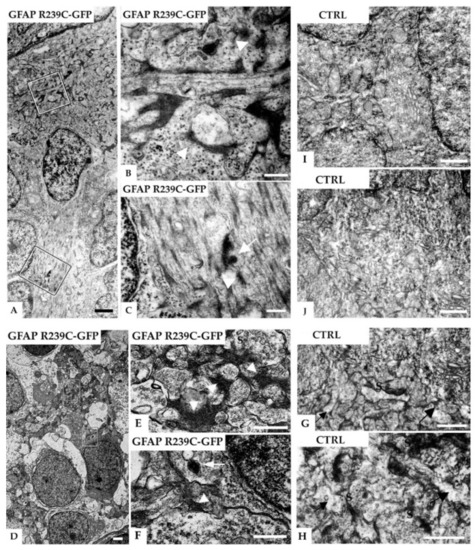- Title
-
Alexander Disease Modeling in Zebrafish: An In Vivo System Suitable to Perform Drug Screening
- Authors
- Candiani, S., Carestiato, S., Mack, A.F., Bani, D., Bozzo, M., Obino, V., Ori, M., Rosamilia, F., De Sarlo, M., Pestarino, M., Ceccherini, I., Bachetti, T.
- Source
- Full text @ Genes (Basel)
|
GFP expression in transgenic glial fibrillary acid protein (GFAP) wildtype (WT) and GFAP R239C embryos. ( |
|
Confocal images showing colocalization between anti-GFAP signal and the GFAP R239C-GFP aggregates in zebrafish transverse sections of 24 hpf embryos. ( |
|
Immunofluorescence analysis of transverse sections of a 24 hpf embryo. ( |
|
Experimental plan showing the timeline of ceftriaxone (CEF) treatments and the effects of 48 h CEF 1.0 mM treatment on embryos expressing GFAP R239C-GFP. ( |
|
Effect of 1.0 mM CEF treatment on |
|
Experimental plan showing the timeline of heat-shock treatments and effects of thermal shock on p.R239C aggregates. ( |
|
Electron micrographs of radial glial cells in the subventricular and neuropil region in the telencephalon of a 5 dpf zebrafish injected with GFAP-R239C-GFP plasmid. ( |
|
Electron micrographs of the telencephalon of 3 dpf zebrafish embryos expressing GFAP R239C-GFP.( |








